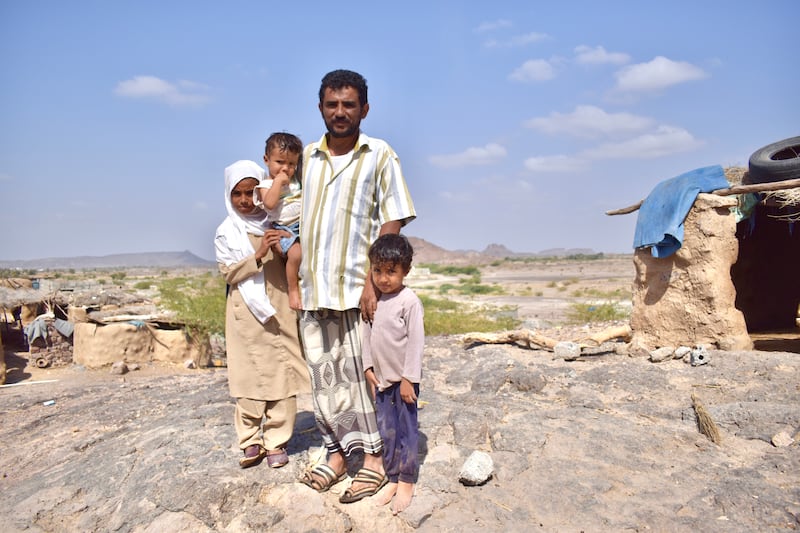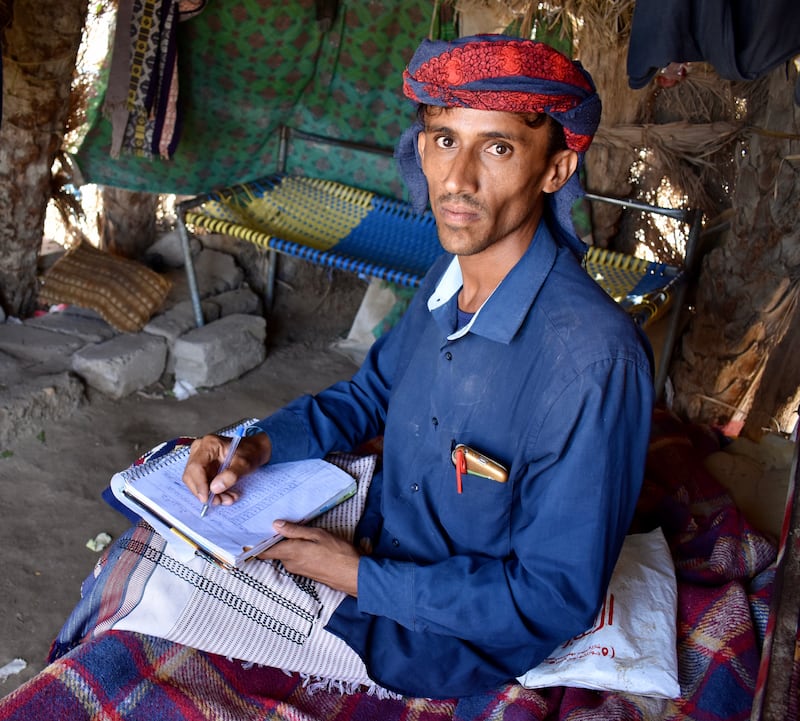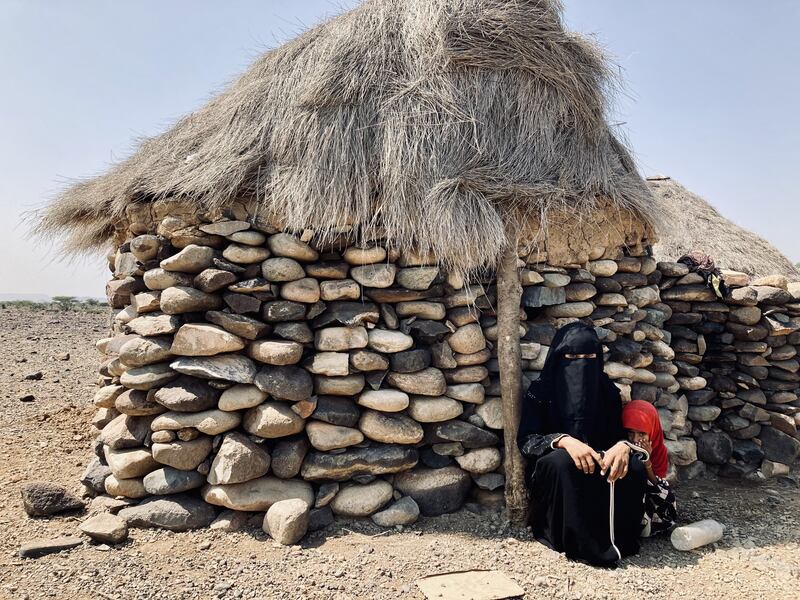Yemen is among the world's most mine-contaminated countries, joining countries such as Afghanistan, Angola, Somalia and Cambodia where the devices have maimed civilians for decades, strewn across the land in the course of long, bloody conflicts.
Long after the war that has already spanned eight years is over, children will still be in danger of losing a limb or their lives while playing with or stepping on a remnant of the continuing conflict.
Based on demining figures alone, the scale of contamination is up to one million landmines, says the Saudi Project for Landmine Clearance (Masam).
Eman is a mother of seven, living in a stone hut with her extended 11-member family in Mowza on Yemen’s Red Sea Coast.
After she was displaced by intense fighting, she returned home two years ago to find herself living, quite literally, in a minefield even after the skirmishes had subsided.
“To get water from the well, to collect firewood, to graze our animals, to do anything we need to do to survive, we have to cross the minefield,” she told the Danish Refugee Council in February.
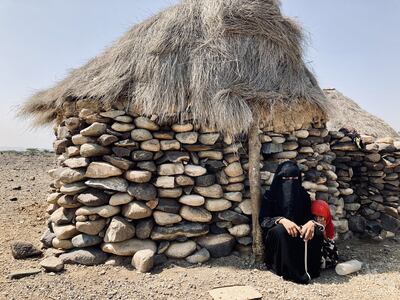
“Every day I have to make the choice: to risk death by a landmine or to die of thirst.”
Eman said she knew of the deadly devices because her children had found them while playing nearby.
“We don’t allow the children to go out anymore. We are scared for them. We live in fear.”
Since the Houthi takeover of Sanaa in 2014 and the subsequent intervention by the Saudi Arabian-led coalition, the rebel group has notoriously used landmines, which have a massive impact on children.
Anti-personnel mines, designed to injure and main, were banned under a 1997 UN convention.
A UN report in 2019 showed that a quarter of all deaths from these weapons were children. Landmines, IEDs and unexploded ordnance (UXO) in the form of grenades, aircraft bombs, missiles or rockets killed more children in the first five months of that year they did in all of 2018.
“Landmines have been responsible for the most child casualties, at 48, with a mortality rate of 40 per cent, followed by UXO, in which one in five children to have been injured have died. IEDs have caused the fewest child casualties but 67 per cent of these have died from their injuries,” the report said.
More recent and accurate figures are hard to come by, monitoring and humanitarian groups have said.
Awareness brochures designed specifically for children are distributed by local and government organisations in Yemen.
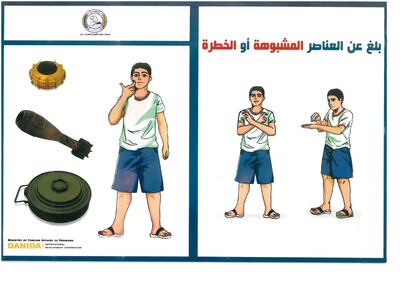
In Yemen’s western governorate of Taez, a dilapidated building once overrun by the Houthis in 2018 has become a makeshift school for a dwindling number of pupils.
Perched on a hillside, there is a long, single, narrow road leading to the building.
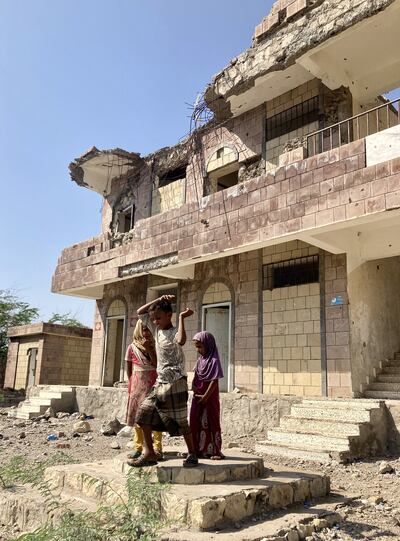
Humanitarian Policy Adviser for the Danish Refugee Council, Cherry Franklin went on a visit there in February.
“For 30 minutes, we drove on a dirt path right through a minefield. Only stones painted red indicated where the mines are,” she told The National.
Headmaster Abdul said only half of his original 240 pupils now attend class.
“When the Houthis retreated from this area, they left mines everywhere. We know the road to the school is safe but it’s hard to stop the children from wandering from the path,” he told Ms Franklin.
“Last year we found two landmines just inside the school gates, in the yard where the children play.”
Builders repairing a nearby mosque were killed when their car drove over a landmine outside the school, he said.
Now, Abdul runs the school by himself along with two volunteers.
“We just want things to get back to normal so that children can come to school and learn. All the children here have hopes and dreams for the future – they’re ambitious. Some want to be teachers, some want to work in the government, others want to be doctors but to do that they need education and a safe place to learn,” he said.
